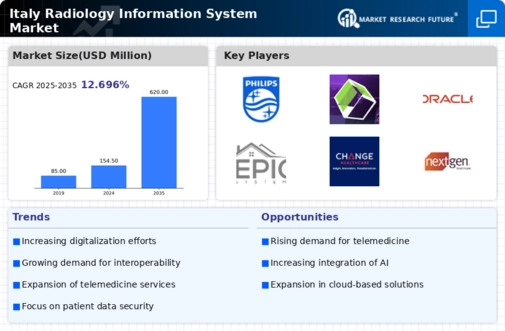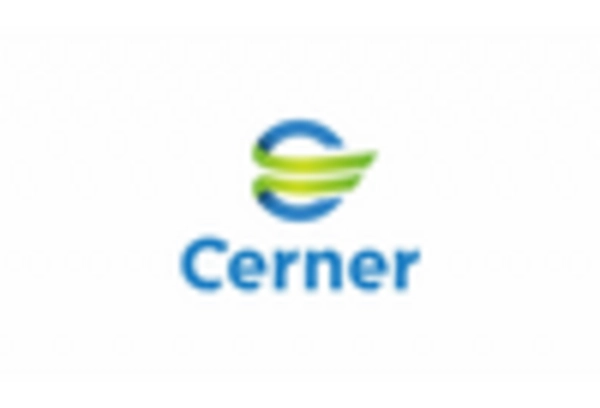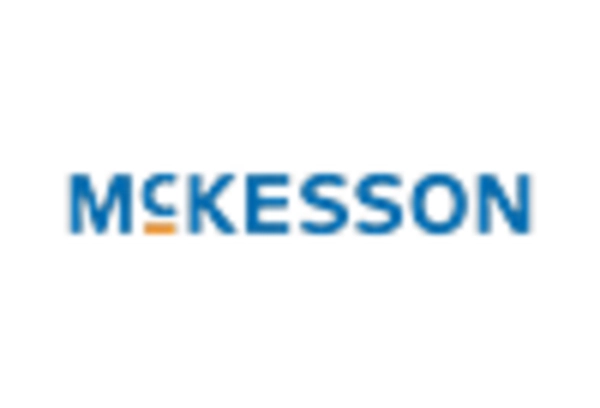Increased Focus on Patient-Centric Care
The radiology information-system market is being influenced by a growing emphasis on patient-centric care in Italy. Healthcare providers are increasingly prioritizing patient engagement and satisfaction, which necessitates the implementation of systems that enhance communication and streamline processes. Radiology information systems that offer features such as patient portals, appointment scheduling, and real-time access to imaging results are becoming essential tools for healthcare facilities. This shift towards patient-centricity is expected to drive market growth, with projections indicating a potential increase of 7% in system adoption rates. By improving the overall patient experience, these systems not only enhance operational efficiency but also contribute to better health outcomes, thereby solidifying their importance in the radiology information-system market.
Growing Demand for Telemedicine Solutions
The rise of telemedicine in Italy is significantly impacting the radiology information-system market. As healthcare providers increasingly adopt remote consultation models, the need for efficient radiology information systems that support tele-radiology is becoming paramount. This shift is driven by the desire to enhance patient access to radiological services, particularly in rural areas where specialist availability may be limited. The market is anticipated to witness a growth rate of around 10% as telemedicine continues to gain traction. Radiology information systems that facilitate seamless data sharing and remote access to imaging studies are essential for supporting this trend. Consequently, the demand for systems that can integrate with telemedicine platforms is likely to rise, further emphasizing the critical role of radiology information systems in the evolving healthcare landscape.
Regulatory Changes Promoting Digital Health
Recent regulatory changes in Italy are fostering a more favorable environment for the radiology information-system market. The government is actively promoting digital health initiatives, which include the adoption of electronic health records and interoperable systems. These regulations are designed to enhance data sharing and improve the quality of care across healthcare facilities. As a result, radiology information systems that comply with these regulations are likely to see increased demand. The market is projected to expand by approximately 6% as healthcare providers seek to align with regulatory standards while enhancing their operational capabilities. This regulatory support not only encourages innovation but also ensures that radiology information systems are equipped to meet the evolving needs of the healthcare sector.
Rising Investment in Healthcare Infrastructure
The radiology information-system market in Italy is benefiting from a notable increase in investment in healthcare infrastructure. The Italian government and private sector are channeling funds into modernizing healthcare facilities, which includes upgrading radiology departments with advanced information systems. This investment is driven by the need to improve diagnostic capabilities and enhance patient care. As a result, the market is expected to grow at a rate of around 9% over the next few years. Enhanced infrastructure allows for the integration of cutting-edge technologies and systems that improve workflow efficiency and data management. Consequently, the radiology information-system market is poised to thrive as healthcare facilities invest in the necessary tools to support high-quality radiological services.
Technological Advancements in Imaging Techniques
The radiology information-system market in Italy is experiencing a surge due to rapid technological advancements in imaging techniques. Innovations such as 3D imaging, digital radiography, and advanced MRI technologies are enhancing diagnostic accuracy and efficiency. These developments are likely to drive the adoption of sophisticated radiology information systems, as healthcare providers seek to integrate these advanced imaging modalities into their workflows. The market will be projected to grow at a CAGR of approximately 8% over the next five years, reflecting the increasing demand for high-quality imaging solutions. Furthermore, the integration of these technologies into existing systems is expected to streamline operations, reduce turnaround times, and improve patient outcomes, thereby reinforcing the importance of robust radiology information systems in modern healthcare settings.

















Leave a Comment